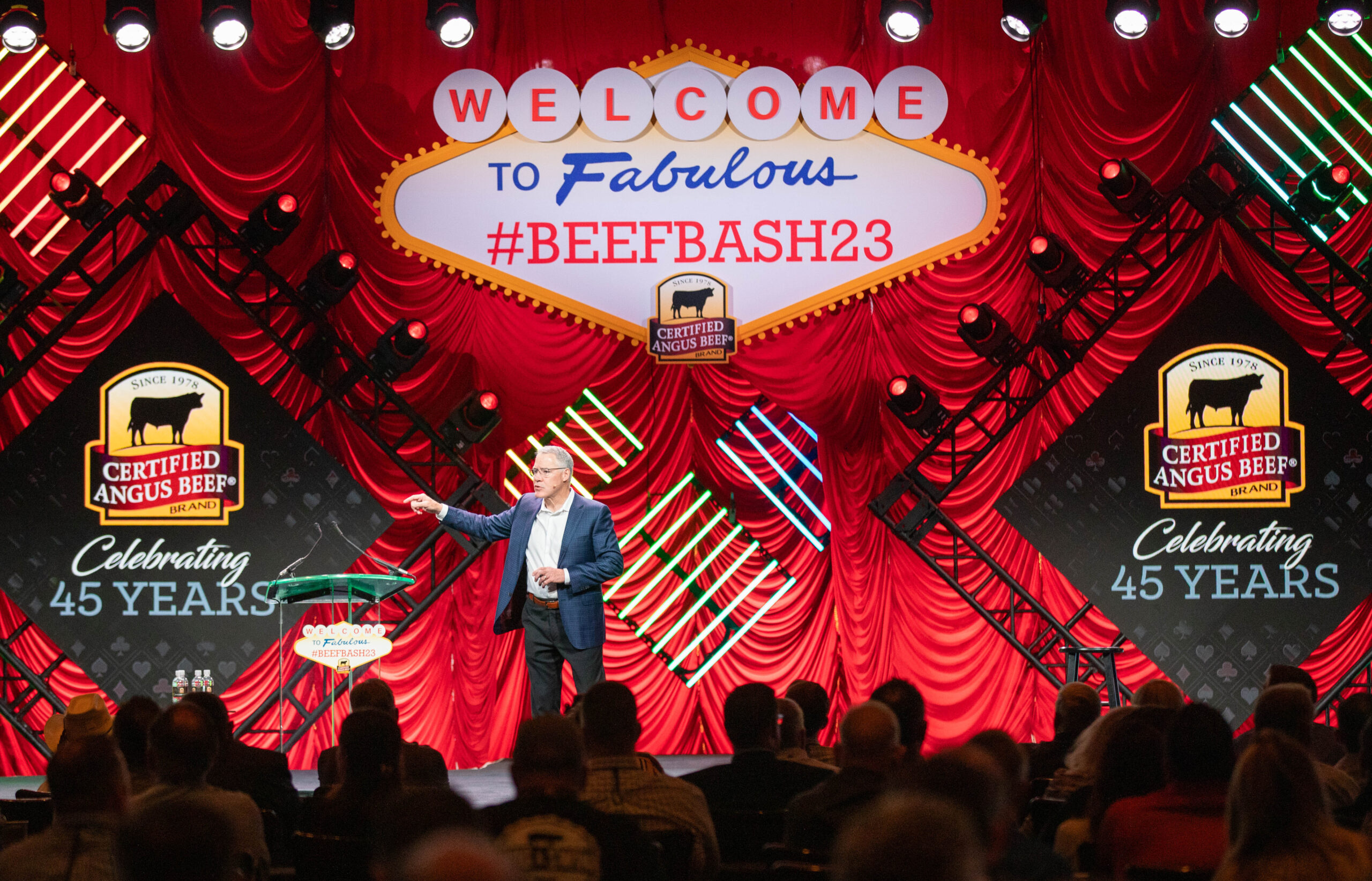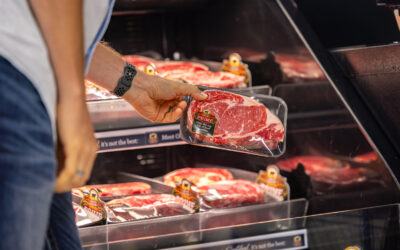
Drought Impact and Cattle Industry Dynamics
CattleFax CEO, Randy Blach, shares insight on the beef industry’s current state amid the challenges posed by drought.
by Courtney Weekley, Communications Specialist
November 2, 2023
As drought conditions persist across much of cattle country, farmers and ranchers are at a pivotal juncture in the cattle industry’s landscape. What impact does this prolonged dry spell have on the nation’s herd numbers? When will heifer retention begin? How will industry dynamics influence the spring bull sale season?
Heavy on the minds of those in the cattle business, there is no crystal ball. But there are historical patterns and data to help make decisions today.
Randy Blach, CEO of CattleFax, gave a comprehensive update of the ongoing drought’s impact during the 2023 Certified Angus Beef (CAB) Annual Conference in Las Vegas, Nevada.

Drought Influences on Herd Numbers
Cow-calf producers particularly affected by the ongoing drought encompass states like Kansas, Missouri, Oklahoma, Texas and Arkansas.
“We have seen a change in the weather pattern moving from a La Niña weather pattern to an El Niño,” Blach says. “But our central southern plains region is still struggling with some terribly dry areas, particularly from Kansas, south.”
While there is some herd rebuilding in the central and northern plains, 2023 is still anticipated to be a year marked by herd liquidation. Blach says he expects a surge in heifer retention over the next 12 to 24 months, supporting a strong demand for high-quality bulls in the forthcoming spring bull sale season.
Cow-Calf Segment’s Focus on Quality and Profitability
For the commercial cow-calf segment, quality remains paramount, despite the high value of feeder cattle. Recent years have witnessed elevated input costs, including hay and grain, driving up production expenses.
According to Blach, due to the drought, most cow-calf producers are forced to only operate at a 60 to 75% stocking rate. However, with the recent decrease in hay and grain prices, it is likely to lower the cost of gain.
“When we look at the grid premiums on what producers are getting paid for, we are going to have the biggest grid premiums in the history of our industry this year,” Blach says.
As reported in March 2022, premiums paid by packers to producers for brand-qualifying cattle totaled $182 million annually, or $3.5 million per week. This significant increase in grid premiums further emphasizes the outlook for producers in the beef industry, as they are set to receive record-high payments for their cattle.
Increased pressure in the industry looks to establish a more sustainable and profitable environment for cow-calf producers, who have endured several years of limited profitability. Their economic viability is pivotal to ensuring a stable supply chain for the entire cattle industry.
Blach emphasizes the importance of quality genetics.
“The market is going to sort out the best genetics from the ones that are not quite there yet,” he says. “So, I think producers need to understand that the market has become very focused on finding the genetics that will help individual commercial producers hit that final target levels for grid premiums.”

Beef Demand and Retail Prices
As the industry navigates these intricate dynamics, there’s another critical component that comes into focus— the redefined landscape of beef demand and its intertwined relationship with retail prices.
“Beef demand remains strong,” he affirms, adding, “And the market wants high quality beef.”
We have seen a slight erosion in sales at high-end white tablecloth restaurants, while casual dining and bar-restaurant businesses continue to show strength in sales. This indicates that there is likely some trade-down taking place as consumer budgets are pinched.
At the retail level, there has been an advertising slow-down in beef features or weekly specials offered to consumers. This is largely attributed to retailers’ narrower profit margins resulting from the surge in fed cattle and wholesale market prices.
“As retail margins have been squeezed, it’s being reflected in less ad feature activity,” Blach says. “We see the beef industry has lost 3% of the total ad space year-to-date, 1% compared to the five-year average.”
Remarkable Progress
From past to present, Blach acknowledges the remarkable success of CAB in the past two decades.
“When you go back over time in the ‘80s and ’90s, it was a flip of the coin for consumers buying a steak on whether it was going to be a good eating experience or a poor one,” he says. “We’re currently not in that same business with quality grade having improved from about 50% Choice and Prime to 83% Choice and Prime, largely due to leadership from CAB and others in industry focusing on quality.”
Today, a substantial portion of beef produced falls into the Choice and Prime categories, yielding significant grid premiums for producers.
“CAB is a high-quality, tremendous eating experience that people are willing to pay for,” Blach says.
As farmers and ranchers look to a herd rebuild, the importance of genetic decisions and cattle production remain ever-important for driving retail beef demand.
You may also like
CAB Sets Sales Records, Sees Historically High Brand Acceptance Rates
In an otherwise tough time in the beef business, sales and supply records have been a bright spot. The positive numbers mean that quality beef production has not let up, and beef demand is holding. Consumers have proven the value proposition: the good stuff is worth a little more money, for a better eating experience.
Feeding Quality Forum Dates Set Earlier in August
When you’re feeding cattle, it counts to keep track of every calf, pound and dollar. Beyond the event’s educational sessions, networking between segments of the beef supply chain is invaluable—from feeders and cow-calf operators to allied industry and university researchers.
Gardiners Highlight Service, Strength at Foodservice Leaders Summit
Mark Gardiner and his son, Cole, of Gardiner Angus Ranch offered a boots-on-the-ground perspective for CAB specialists attending the annual event, designed to deliver resources that help train foodservice teams and serve consumers at a higher level.



